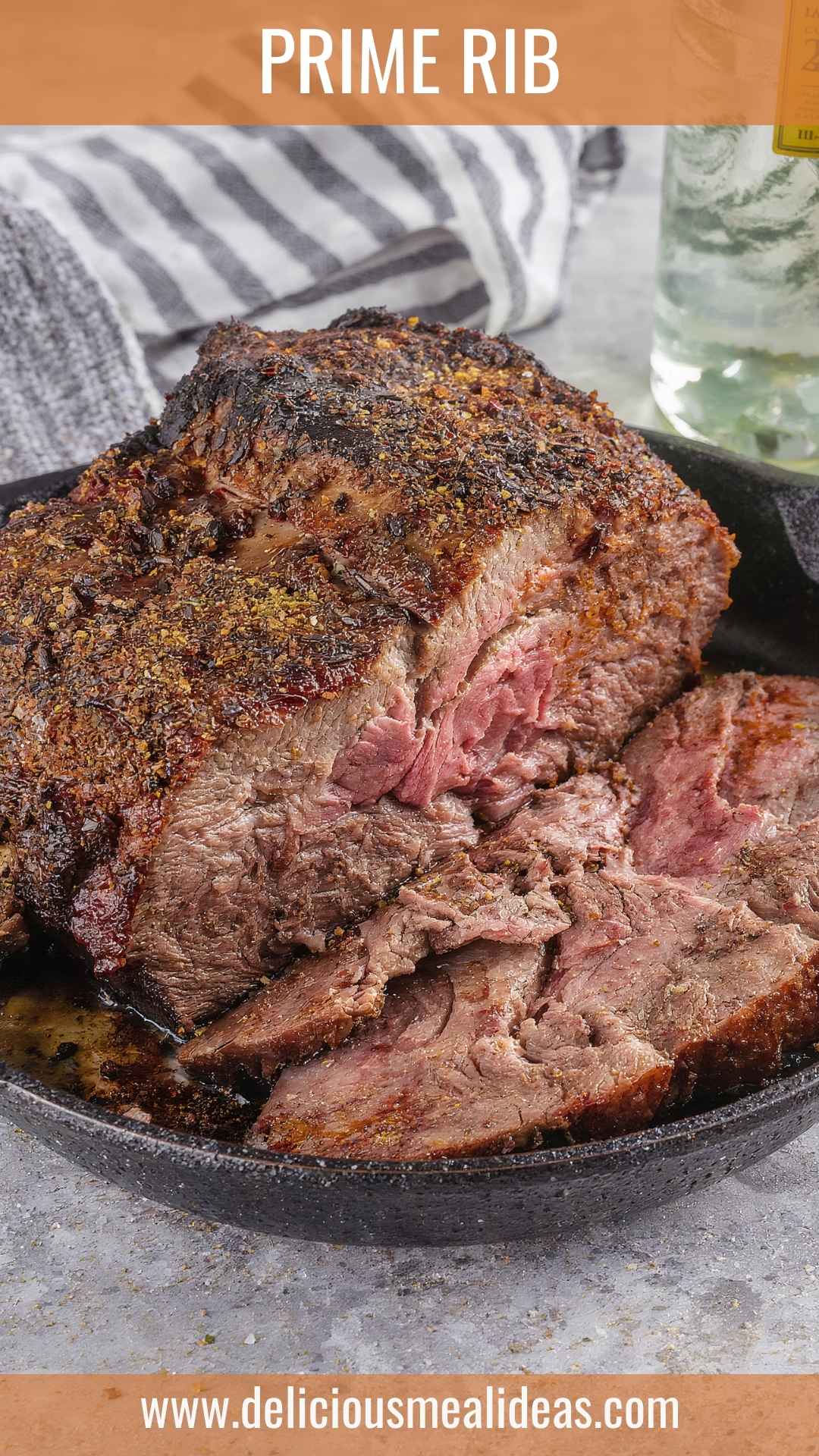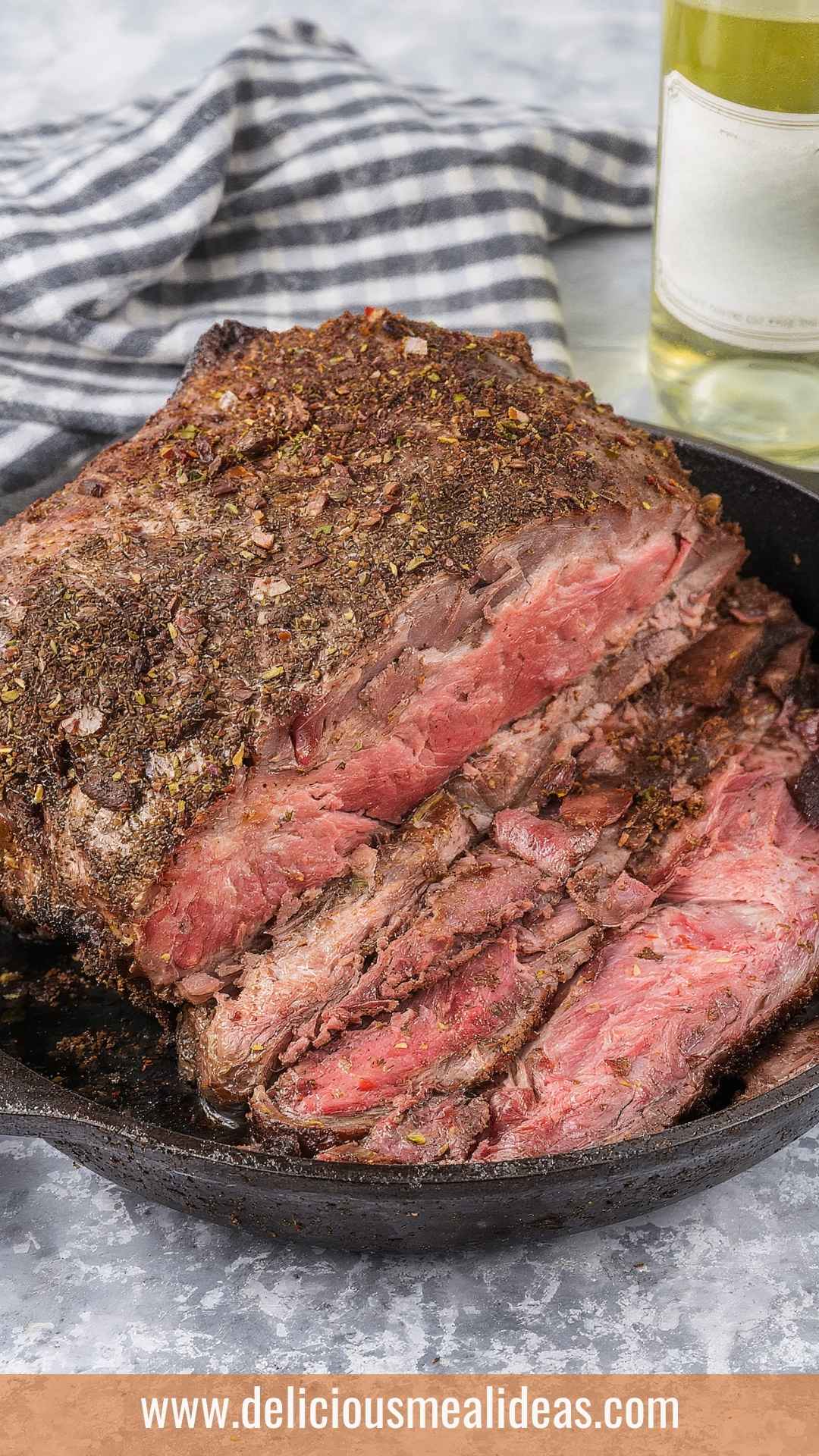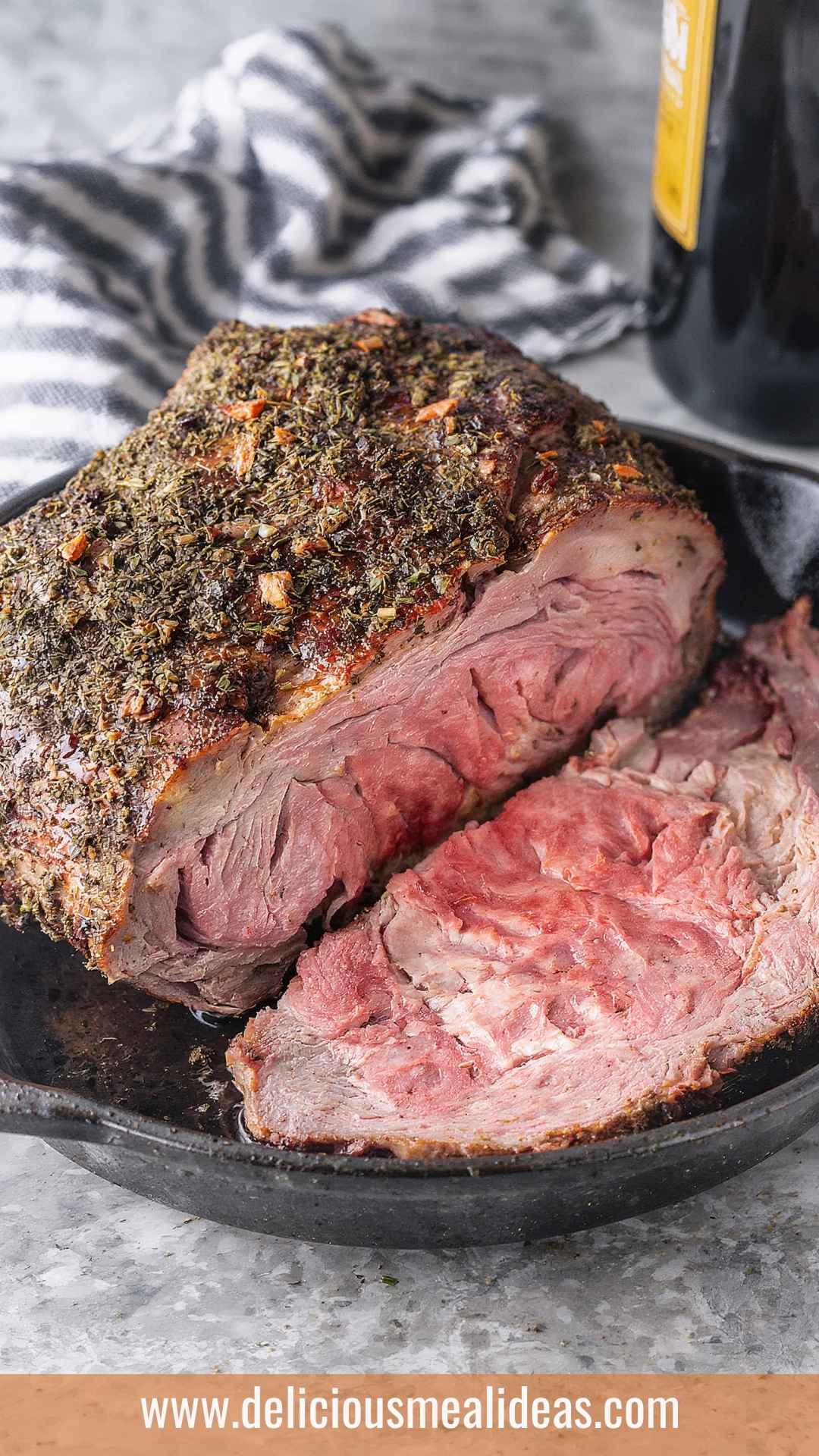Before diving into the intricacies of creating the perfect prime rib, let’s chat about what pairs well with this magnificent cut of meat. You see, prime rib isn’t just a meal; it’s an experience. To elevate that experience, consider these pairings:
1. Red Wine: A full-bodied Cabernet Sauvignon or a rich Merlot complements the richness of prime rib brilliantly. They bring out the savory flavors, making every bite feel luxurious.
2. Horseradish Sauce: A classic! The sharp heat balances the richness of the beef. It adds a kick that intrigues the palate.
3. Garlic Mashed Potatoes: Creamy, buttery potatoes are comfort food at its best. The garlic infusion amps up the flavor profile while providing a smooth texture that pairs marvelously with prime rib.
4. Grilled Asparagus: This green addition is both healthy and vibrant. A sprinkle of lemon zest can brighten up the dish and cut through the richness of the meat.
5. Caesar Salad: Crisp romaine with a tangy dressing provides a refreshing contrast. It’s like having a light breeze on a sunny day, making your meal feel balanced.
With these pairing suggestions ready, let’s embark on a flavorful journey through the art of preparing prime rib.
Why This Recipe Works
Now, let’s break down why this recipe stands out:
Step 1: Flavorful Herb Infusion
The combination of rosemary, thyme, and garlic creates an aromatic blend that infuses the beef, resulting in a delicious depth of flavor you wouldn’t want to miss. The fresh herbs not only enhance the taste but also provide an inviting fragrance.
Step 2: Perfect Cooking Method
Using a slow-roasting method ensures that the prime rib remains juicy and tender. High heat at the beginning ensures a beautiful crust, while gentle cooking ensures it’s perfectly tender inside. No one enjoys dry beef!
Step 3: High-Quality Ingredients
This recipe emphasizes quality over quantity. Choosing a well-marbled cut of beef ensures that every slice is juicy. Using fresh herbs and good olive oil adds taste that unrefined ingredients simply can’t match.
Step 4: Easy to Follow Instructions
Even if you’re a novice cook, this recipe breaks things down step-by-step, ensuring that you can achieve restaurant-quality prime rib from your home kitchen. Directions are clear, and no fancy techniques are required. You can approach it with confidence.
How Does It Taste Like?
When you cut into a perfectly cooked prime rib, the first thing you'll notice is the deep mahogany crust. That beautiful outer layer hints at the flavor awaiting inside. The meat, when properly cooked, should have a pink, moist center that practically melts in your mouth.
The combination of garlic and herbs brings a savory note while the natural richness of the beef shines through. Each bite feels luxurious, with a balance of flavors that play off each other. The smoky notes from the paprika? Simply delightful.
What Sets This Recipe Apart from Other Prime Rib Variations?
What makes this prime rib recipe unique is its focus on flavor without overcomplicating the process. While many recipes lean heavily on thick rubs or complex marinades, this approach champions simplicity. The inclusion of Dijon mustard enhances the flavor without overshadowing the beef.
Plus, the use of quality ingredients is the real game-changer. Many recipes might suggest basic grocery store products, but I advocate for special, high-quality items that contribute to a dish's elevation. This is not just about cooking; it’s an experience that speaks to caring about what you serve.
The Ingredients
Here’s what you need for this sumptuous feast:
- 1/4 cup extra-virgin olive oil: For a luscious coating.
- 8 cloves garlic, finely minced: Imparts a fragrant foundation.
- 2 teaspoons finely chopped fresh rosemary leaves: Adds earthiness.
- 1 teaspoon fresh thyme leaves, minced: Offers a subtle floral note.
- 2 teaspoons freshly cracked black pepper: For just-right heat.
- 1 teaspoon Dijon mustard: Enhances flavor depth.
- 1/2 teaspoon smoked paprika: For a hint of smokiness.
- Coarse sea salt, to taste: Essential for seasoning.
- 5 pounds bone-in beef prime rib: The star of the show.
- Creamy horseradish sauce (optional): To serve alongside.
Instructions
Let’s get started on this delightful prime rib.
Step 1: Prepare the Rib
Begin by taking your prime rib out of the fridge at least an hour before cooking. Allow it to reach room temperature for even cooking. This is crucial for achieving that juicy texture.
Step 2: Preheat the Oven
Preheat your oven to 450°F (232°C). This initial high temperature will give the roast a beautiful crust.
Step 3: Create the Herb Mixture
In a bowl, mix the olive oil, garlic, rosemary, thyme, black pepper, Dijon mustard, smoked paprika, and salt. This blend will be used to rub on the prime rib.
Step 4: Rub the Mixture on the Rib
Generously apply the herb mixture all over the rib. Be sure to get it into the crevices! Don’t skimp here; this is where the flavor foundation lies.
Step 5: Roast the Prime Rib
Place the rib on a roasting rack in a pan, bones down. Roast for about 20 minutes at 450°F, allowing the outside to form that perfect crust.
Step 6: Lower the Temperature
Reduce the oven temperature to 325°F (163°C) and continue roasting until the internal temperature of the meat reaches your desired doneness. Aim for 130°F (54°C) for medium-rare.
Step 7: Rest the Meat
Once it reaches the desired temperature, remove it from the oven and cover it loosely with foil. Letting it rest for 20-30 minutes is crucial. This step allows the juices to redistribute within the meat.
Step 8: Carve and Serve
Slice the prime rib against the grain and serve with that creamy horseradish sauce if desired. Enjoy!
Notes
Here are some essential pointers to elevate your prime rib experience:
Choose Quality Meat: When selecting your prime rib, look for marbling; this adds flavor and tenderness.
Avoid Overcooking: Use a meat thermometer to ensure accuracy; watch for that internal temp!
Resting is Key: Don’t skip the resting phase; it ensures juiciness.
Save the Bones: They can be used to make a delicious broth.
Pair Unlike a Pro: Experiment with different kinds of sides and wines. Don’t hesitate to try something new.
Nutrition Information
Here’s a rough breakdown for a standard serving of prime rib (approximately a 3-ounce slice):
- Calories: 390
- Protein: 35g
- Fat: 26g
- Saturated Fat: 11g
- Cholesterol: 102mg
- Sodium: 130mg
Nutritional values may vary based on the cut of meat and cooking methods used.
How Do You Store This Prime Rib?
If you have leftovers, store them properly to keep the meat juicy. Place it in an airtight container in the refrigerator for up to 3 days. Ensure it’s cooled before sealing.
For longer storage, you can wrap it in foil and then in plastic wrap before freezing, where it lasts up to 3 months. Just remember to thaw it in the fridge before reheating.
Sides for Prime Rib
Complement your prime rib with these delightful sides:
Step 1: Garlic Mashed Potatoes
Who doesn’t love creamy mashed potatoes? Boil, mash, and mix with butter and garlic for a velvety side that balances the beef's richness. It’s comfort food at its finest.
Step 2: Roasted Brussels Sprouts
These little green wonders transform when roasted, gaining a sweet, nutty flavor. Toss them with olive oil, salt, and pepper—delicious alongside the savory beef.
Step 3: Creamy Coleslaw
This crunch and tang from coleslaw add brightness! Its crispness creates a refreshing contrast to the richness of the prime rib.
What Alternatives Can You Use for the Ingredients?
If you find yourself short on an ingredient, here are some alternatives you can consider:
Step 1: Olive Oil
Canola or avocado oil works as substitutes while keeping things smooth.
Step 2: Fresh Herbs
Dried herbs can be a quick alternative. Use 1/3 the amount since dried herbs are more concentrated.
Step 3: Dijon Mustard
Yellow mustard or whole grain mustard can step in if you run out. Both deliver a robust flavor.
Step 4: Smoked Paprika
Regular paprika or even chili powder can lend a different spin, making for an exciting variation.
Conclusion
Prime rib is more than just a dish; it’s a centerpiece that invites camaraderie and joy. With a focus on simple ingredients, proper techniques, and heartfelt execution, this recipe stands out, ready to impress.
Whether you’re hosting a holiday gathering or just a Sunday dinner, prime rib will be a delicious memory waiting to happen. Now armed with this guide, you can confidently embrace the challenge. Enjoy your culinary adventure, and here's to many wonderful meals ahead!
You’ll also like the following recipes!





